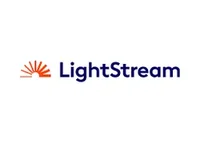How to get a $5,000 personal loan: Quick funding options

Key takeaways
- Lenders review your credit history and score to determine loan eligibility and interest rates, so it’s important to have a good credit score.
- Personal loans can be obtained from banks, credit unions and online lenders, each with its own requirements and benefits.
- Borrowers should consider the long-term costs of a personal loan, including interest and repayment terms, before deciding on a lender.
If you need $5,000 to pay for medical bills, home improvements, an emergency or to consolidate high-interest debt, a personal loan may be one option. A variety of banks, credit unions and online lenders offer $5,000 personal loans, and most are able to fund loans quickly — in some cases, as soon as the same business day.
Because they are so common, it is critical to understand what you may need to qualify and how to shop for the best personal loan rates. With a little extra research, you can find a lender that meets your needs without breaking the bank.
How to get a $5,000 personal loan
Lenders review your credit score and credit history to assess how likely you are to repay the loan. You will need good to excellent credit to qualify for the lowest rates. If you have bad credit, a lender may charge you a high interest rate or reject your application.
Where to get a $5,000 personal loan
You can get a $5,000 personal loan by applying for financing with a bank, credit union or online lender. Each potential lender comes with its own eligibility requirements, such as a minimum credit score or debt-to-income ratio limit. Simply, you have to show the lender that you have the ability to manage and repay the loan effectively.
In general, the average personal loan interest rate is around 12.31 percent — and borrowers with poor credit may only qualify for an annual percentage rate (APR) over 30 percent. If you have a minimal credit history, comparing bad credit personal loan rates is essential to finding a competitive offer.
Banks
Working with a bank tends to offer an in-person experience that an online lender does not. A bank-backed personal loan is an especially strong choice for borrowers who already have an account with an institution that offers a personal loan that fits their needs. This can ease the application process and may even carry additional discounts.

U.S. Bank
Bankrate's view
U.S. Bank specializes in smaller personal loans with competitive rates for existing customers. Its minimum credit score of 660 makes it a good option for those in the higher end of the fair credit range, and it has one of the largest range of loan terms on the market, ranging from 12 to 84 months. Depending on when you apply, your loan can be funded as soon as the next business day.

Pros
- Shorter terms available
- Non-customers can apply
- Joint borrowers allowed

Cons
- Limited availability
- Excellent credit required for best rates
- No direct creditor payments
Credit unions
A credit union differs from a bank in the sense that it is a member-owned, not-for-profit institution. In order to get a personal loan from a credit union, you must first become a member. It typically requires a small fee, but it is often well worth it in the end — many times, credit unions offer more competitive rates than other lending options.
As of the third quarter of 2024, personal loans from credit unions carried an average interest rate of 10.89 percent for a 36-month loan, according to the National Credit Union Administration (NCUA). Compared to the 11.94 percent national average rate for banks, you may be able to save on interest by working with a credit union.

PenFed
Bankrate's view
If you are interested in borrowing from a credit union, PenFed is well regarded for its competitive rates, starting around 9 percent, and its expansive customer support. You can also apply for a joint loan with a coborrower, which can increase approval odds for those with minimal credit.

Pros
- Fast funding timeline
- Minimal fees
- Joint applications available

Cons
- Membership required
- Undisclosed eligibility criteria
- Frequent app outages and crashes reported
Online lenders
An online lender may offer a quicker process than a bank or credit union — and some lenders are able to offer loans as soon as the same day you apply. This is a strong option for those who feel comfortable navigating their finances online without in-person customer service.
Along with that, shopping online can make it easier to compare potential rates, all from the convenience of your computer or phone. When shopping with online lenders, pay extra attention to the reputability of the company by checking reviews and using trusted sources like the Better Business Bureau and Trustpilot.

LightStream
Bankrate's view
Part of Truist Bank, LightStream is a fully online lender with few loan use restrictions. It has a minimum loan amount of $5,000 and a low starting rate. In addition, there are no fees — not even late fees — and LightStream offers a Rate Beat program to help you secure the most competitive APR. Like with any lender, the lowest rates will be given to those with excellent credit, and it may be difficult to qualify if you don’t have a strong credit score.

Pros
- No origination or late fees
- Rate Beat program
- Funding as soon as the same business day

Cons
- Prequalification not available
- Long credit history required
- High maximum APR
What you need to qualify for a $5,000 personal loan
To qualify for a $5,000 personal loan, you need to demonstrate that you are financially stable enough to repay the debt along with your other expenses. Lenders consider your credit score, income and debt-to-income ratio (DTI) when you submit an application.
- Credit score: Most lenders will want you to have good to excellent credit to qualify, although there are some bad credit personal loans that are available to those with lower scores and a shorter credit history.
- Income: You will need to provide proof of income to qualify for almost every lender — and your income needs to be high enough to handle your monthly payment.
- Debt-to-income ratio: In addition, lenders want to see that you have a higher income than your total debt. A good debt-to-income ratio is considered under 36 percent for the best approval odds.
Before making a decision, compare the rates and terms for at least three lenders so you can be sure that you find the best terms for your needs.
How much does a $5,000 personal loan cost?
How much you pay for a $5,000 loan depends mostly on your interest rate and repayment term. You can use a personal loan calculator to estimate the total cost. For example, this is what your borrowing costs could look like for a $5,000 loan with a 36-month term:
|
Interest rate |
Monthly payment |
Total interest |
|
8 percent |
$157 |
$640.55 |
|
12 percent |
$166 |
$978.58 |
|
16 percent |
$176 |
$1,328.27 |
If you choose a longer loan term, it could lower your monthly payments but increase the amount of interest you pay over the life of the loan. For instance, here’s what your costs might look like for a loan with a 60-month term:
|
Interest rate |
Monthly payment |
Total interest |
|
8 percent |
$101 |
$1,082.92 |
|
12 percent |
$111 |
$1,673.33 |
|
16 percent |
$122 |
$2,295.42 |
Alternatives to $5,000 personal loans
Getting a personal loan to cover a $5,000 expense isn’t the only route. For some, it might be better to consider a credit card or home equity loan. Consider some alternatives to a personal loan and whether each option best fits your needs.
- Credit cards: While this option becomes riskier as spending increases, credit cards can be a sound choice if you are looking for payment flexibility. To keep your credit score in check, ensure you aren’t over-extending your credit utilization ratio and work to pay it in full each month.
- Peer-to-peer lending: With a peer-to-peer loan, sometimes called a P2P loan, you will apply directly to a group of investors instead of a financial institution. You will have increased approval odds than with a traditional lender.
- Home equity loan: A home equity loan is a one-time loan that is secured by your home. It is a way to get a lump sum upfront with a fixed interest rate for monthly payments. However, because your home is collateral, you potentially risk foreclosure should you be unable to repay your debt.
- Home equity line of credit (HELOC): A HELOC is similar to a home equity loan, except that it offers a revolving line of credit instead of a lump sum. A HELOC can help ensure you have access to the funds you need if you have ongoing financial obligations.
- Personal line of credit: If you do not want to use a home as collateral, you could instead apply for a personal line of credit. These allow you to make withdrawals during the draw period, which you then repay with interest. It is similar to a credit card, but you can typically benefit from lower interest rates with a personal line of credit.
- Buy now, pay later apps: Buy now, play later (BNPL) apps, such as Klarna and Affirm, allow you to upfront access to funds that you repay in installments. This short-term financing can be ideal for borrowers with bad credit, but it can also be subject to short repayment periods and high fees.
How to determine if you need a $5,000 loan
First and foremost, you must determine if you need to take on debt or if you could save up for the expense. If you decide you do need to borrow, review your budget to see if you can afford the monthly loan payments. Borrowing only what you need can keep the total cost down. Plus, ensuring you can make your payments will help you avoid potential late fees and damage to your credit score.
Learn more: How does a personal loan affect your credit score?
That said, there are times when it might be beneficial to borrow more than you need. For instance, taking out a larger amount could make sense if you’re borrowing money for a home improvement project and don’t know the exact costs. If this is the case for you, find a lender with no prepayment fees so you can pay back any extra.
You may also like

Can I get a personal loan to buy a house?

How to get a $30,000 personal loan


How to get a $50,000 personal loan: Check out these lenders


